You’re a product of your home course, but I’m going to show you how to make your game travel.
Every course, no matter the pedigree, has certain shots it favours over others. I grew up at a classic Harry Colt-designed course called Betchworth Park in the UK. Thanks to the non-irrigated turf, summertime meant you had to play the ball along the ground and roll it up to stop it on the green. You probably adapted similarly to your home course, developing your game to suit its style. In other words, you are where you play.
The problem with that is far too many amateurs try to replicate a baseline swing no matter where they tee it up instead of developing a shot-centric skill set that engages the creative and strategic mind. You want to see and execute the right shot for the environment you’re in – not just stick with what works for you on your home course.
I coach several players on the PGA Tour, and we encounter many different styles of courses throughout the year. If they didn’t adapt their games, they wouldn’t stay out there – and I wouldn’t keep my job.
To help celebrate this Top 100 Courses issue, I’m going to help make your game travel by taking you on a tour of some of Australia’s most iconic courses and show you a shot you should play when you encounter any similarly designed course or hole. Now when you recognise these styles, you’ll know how to beat them. -– with Matthew Rudy

The Australian: Fade it down the fairway
You’re probably not going to encounter the botanical garden-quality conditions of The Australian, but you will likely come across similar holes that demand certain shapes off the tee. The Australian’s opening hole, along with the fifth, sixth and seventh, requires a fade from most players. How do you move the ball left to right without turning it into a slice when playing a similarly shaped hole? First, don’t play the ball too far back in your stance. Set up with it off your lead instep, and stand a little closer to it than standard. Second, when you swing, feel your head and chest staying right over the ball through impact and then let the club exit low and around you [above].
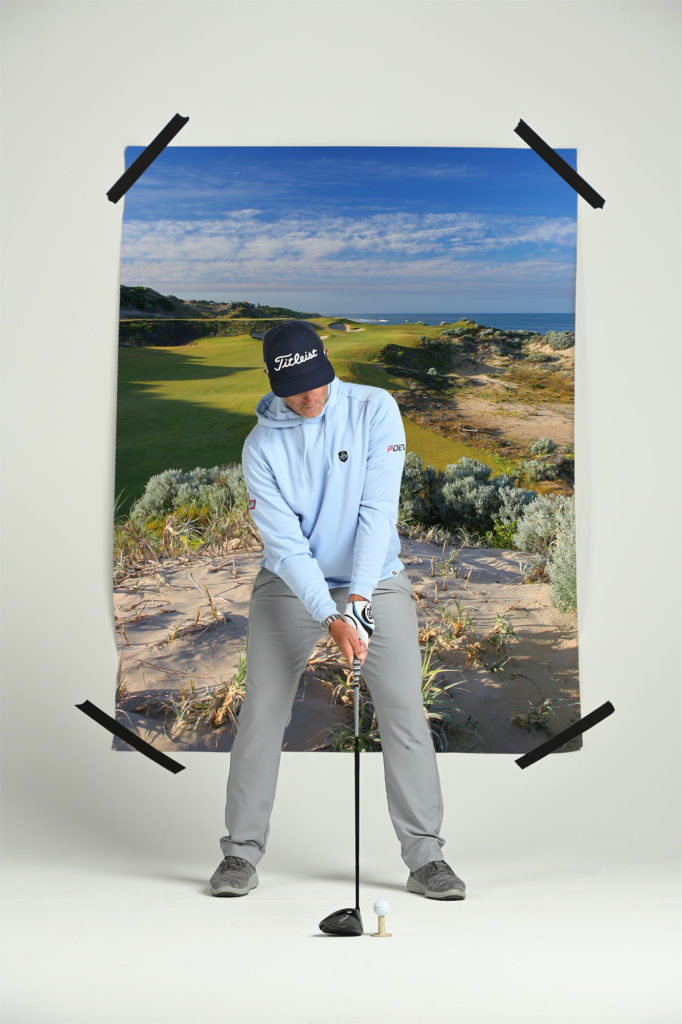
The Cut: Rifle one low and hot
The Cut is a demanding design that gives you very specific routes to take off many tees. When you face a course or hole that puts a premium on tee-shot accuracy, you’ll want to hit a “bullet drive”. It’s not so much the “stinger” Tiger made famous as it is just a drive with a penetrating ball flight. To execute it, tee the ball slightly farther back than normal [above], avoid swaying or moving laterally, and make a shorter swing with your shoulders more level through impact. Ball position is key, because if you tee it up any farther forward than I am, you’ll likely launch it too high.
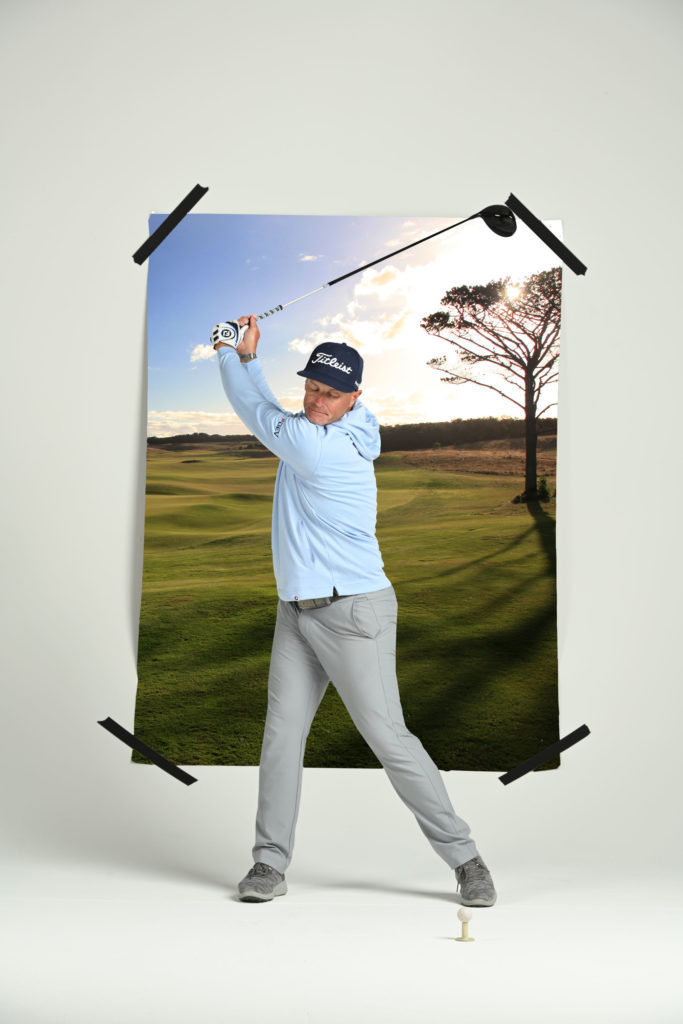
Moonah Links (Open Course): Air it out in the big ball parks
The modern tour game is played on some big courses, just like Moonah Links on the Mornington Peninsula. Soon, 8,000 yards will be the new 7,000, and raw distance off the tee will be the premium. If you get a chance to play a let-it-rip type of course, think of your tee shot as you would the barrel of a military tank firing a shell. You have to tilt the barrel upwards to send it, which means slightly accentuating the angle of your shoulders at address. You will also need to make a full backswing, really loading onto your trail side [above]. One more thing: many players mistakenly try to swing hard at the start of the downswing and end up lurching and lunging, causing poor contact. I want your transition into the downswing to be much smoother. Gather your speed no sooner than halfway down.

RACV Healesville: Drop it softly on the green
When small or segemented greens like Healesville’s are firm and fast, the most reliable way to keep the ball on the putting surface is with a high-fade approach shot. Hitting the ball with a slightly open face will help create that shape and trajectory. The mistake is letting your lead hand rotate in the downswing so that the palm is skywards through the hitting zone. That shuts the clubface and delofts the shot. Instead, focus on keeping the palm facing away from the target as you swing down and through, and finish with this “held-off” look [above].
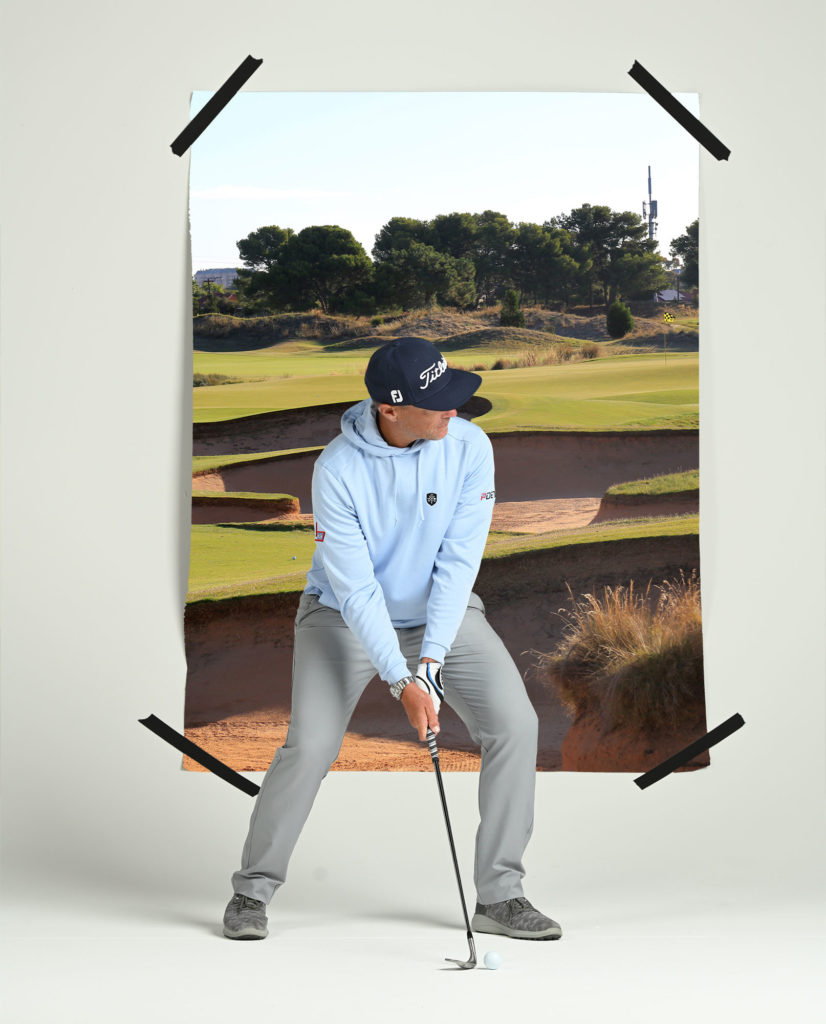
Glenelg: Hoist it hight over tall lips
Pete Dye drew from the classic sod-faced bunkers in Scotland when he designed obstacles like railroad ties and steep grass faces at TPC Sawgrass. Similar features in Glenelg’s revetted bunker lips demand you play escape shots that get the ball up immediately. The trick to playing these shots well is understanding how to increase the effective loft on the clubface. You need to open the face before you take your grip, play the ball forward, get into a wider stance and lower your hands [above]. This setup puts you in position to crank up the loft, and you can swing with a lot of speed without worrying about hitting the ball too far. It will pop up softly.
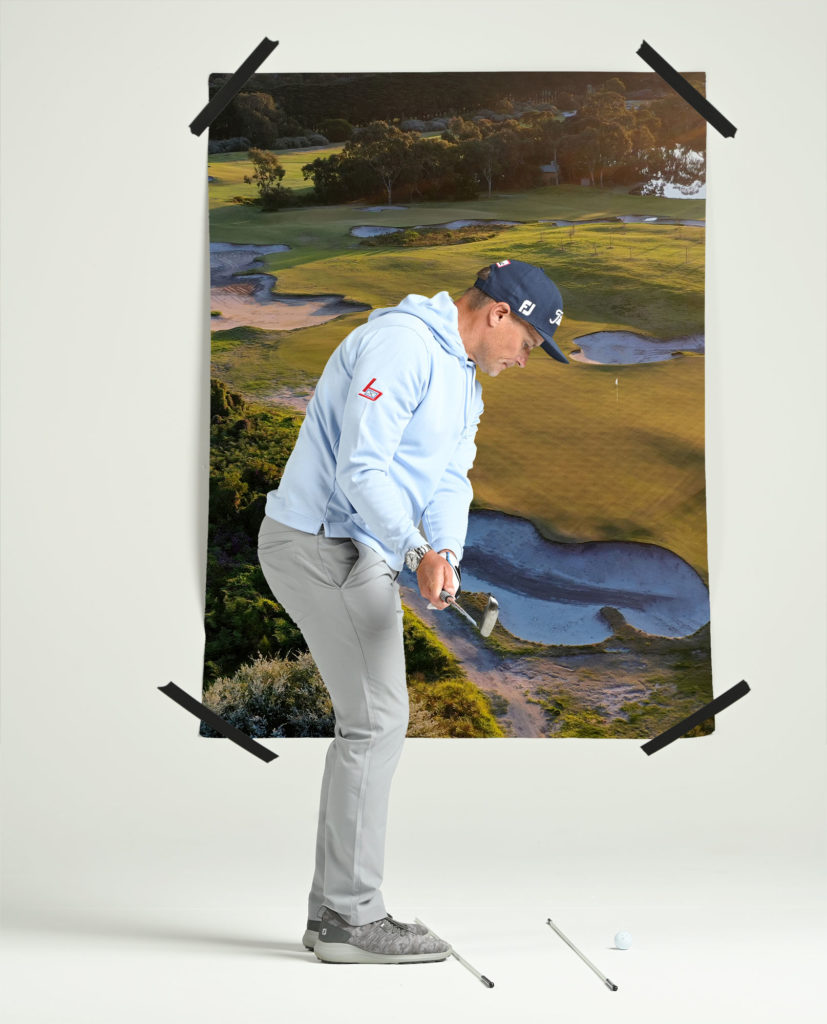
Sandy Links: Dial in your pitching
The greens at most Sandbelt courses are notorious for their slopes and punishing collection areas. That means you need to be spot-on with your pitching, landing the ball in a place that gives you a reasonably good chance to make the ensuing putt. To do that, stand slightly open to your target (I’m using alignment rods to demonstrate) and get the club in this toe-up look on the way back [above]. This puts the wedge in a position to glide along the turf, not dig into it. Now that you know how to produce better contact, let’s work on distance control. When you swing, keep your chest moving, not just your arms. You will find the ball comes off at a predictable speed. It’s nice to practise clean contact at the range, but it’s even better if you lay out some towels or headcovers at intervals and try to hit them. You’ll then get feedback on how far your shots carry and roll.
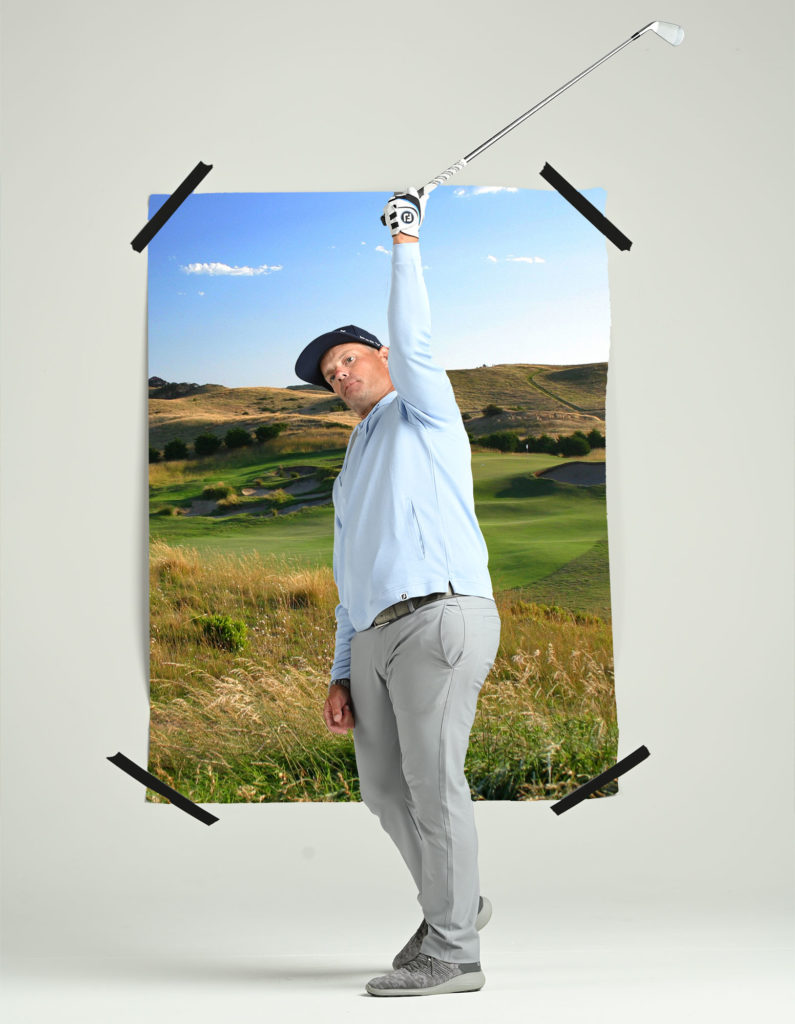
The Dunes: Ride the wind
The Dunes is one of Australia’s most addictive links experiences – few trees, rolling terrain and wind that always should be factored when choosing a club and what type of shot to play. When you’re downwind on a links course, a high draw is a great option. To practise it, focus on these two feels: 1) you need more tilt in your swing. Keep the trail shoulder lower than the lead shoulder going through; 2) finish high, with the logo of your glove pointed at the target. I’m making one-arm swings [above] to rehearse the movement and feeling I want to produce that nice, high draw.
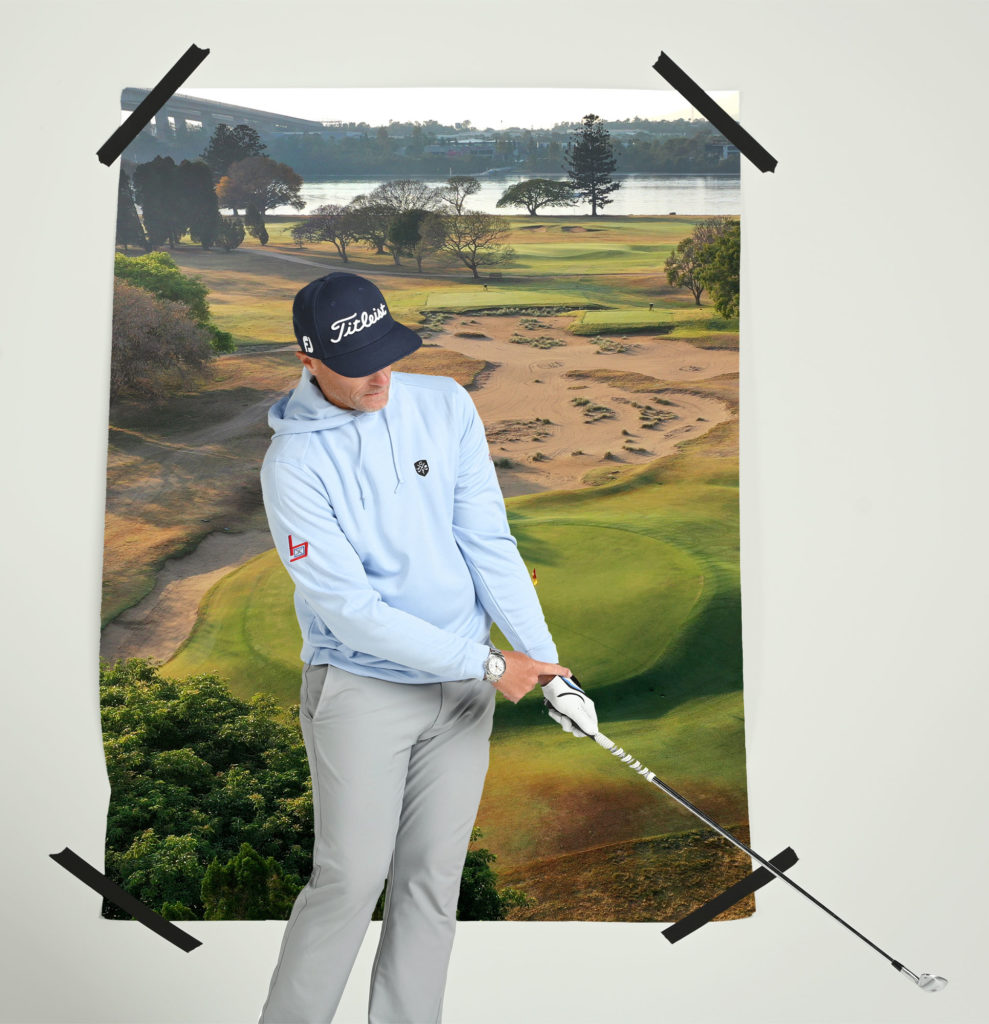
Royal Queensland: Control the height on your irons
You may not get to experience the par-3 17th at Royal Queensland like it is during the Australian PGA Championship when the surrounding crowd makes it feel like an NRL game. That hole’s framing is not unlike the challenge you face on a course where distance control is crucial to scoring (and avoiding penalties). To fine-tune your iron carry distances, adjust the inclination of your lead wrist at impact. When your lead wrist is in extension [above] at impact, you will put more loft on the shot, and the landing angle will help the ball quickly stop. When that wrist is in flexion (knuckles down), the ball flies on a more penetrating trajectory and stops as a result of backspin. Tour pros typically flight their iron shots lower because it’s easier to hit them pin-high.

Barnbougle Dunes: Clip it off firm turf
Links courses like Barnbougle Dunes and Barnbougle Lost Farm get running firm and fast in the summer, and that harder turf demands you understand how to get the club to interact with the ground on pitch shots. Most players don’t create enough loft on the backswing and lead with their hands on the downswing, striking the ground first with the leading edge of the club. That makes it easy to chunk it. Instead, get the toe pointing up on the backswing and keep it that way through impact [above]. It’s like you’re making a “cut” swing, meaning your swing path cuts across the ball from out to in. Do that and the bounce, or trailing edge of the wedge, will slide along the ground – providing forgiveness. Played this way, there’s really no reason to fear hitting it heavy. Hit too far behind the ball, and the bounce will still glide along the turf and produce a decent shot.
Mark Blackburn is one of Golf Digest’s 50 Best Teachers.




